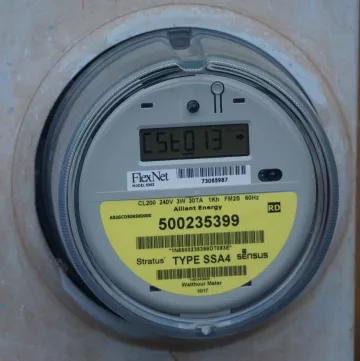Iowa Beyond Coal Calls Out Clean Energy Savings to Muscatine Power and Water
12/17/2020 | Katie Rock
Muscatine Power & Water (MPW) made public over the summer its initial plans to phase out some of its coal power, replacing three of the four coal burning units of the 270 MW plant with 30 MW of solar. MPW is currently weighing whether to replace the remaining coal burning unit 9 with a new combined heat and power (CHP) gas plant, based on a power supply study that has not been available to the public.
I shared public comments with the MPW board first over the summer. At MPW’s December board meeting, I followed up by sharing an analysis by Sierra Club that shows investing in a clean energy portfolio would be cheaper than building a new gas plant. (Read the full analysis here.)
Sierra Club applauds the MPW board recognizing that it is in customers’ interests to transition away from coal. Replacing coal power with cleaner alternatives can save money and immediately improve public health. However, growing evidence shows gas increasingly cannot compete economically with clean energy technology.
The Sierra Club has repeatedly asked for MPW’s power supply study to be made public. MPW customers deserve this transparency in your decision making process. Because the study remains unavailable, we made some assumptions about the size and cost of a potential gas plant. We would like to make a true apples-to-apples comparison between our analysis and the proposed study. So we will continue to push for transparency by asking for its public release, and will refine this analysis if that happens.
We used a formula based on an algorithm by the Rocky Mountain Institute to compare the cost of two different clean energy portfolios to a potential combined cycle gas plant (which is typically what a CHP plant is minus the sale of excess heat). We assumed a plant size of 160 MW for an estimated total cost of $283 million. Both clean energy alternatives are cheaper than building a gas plant.
Additionally, if the gas plant was built in 2028, the model shows that the plant would become a stranded asset within 5-10 years. This means that within the first five to ten years of the plant’s operating life, the cost of building and operating a mix of clean energy would be cheaper than the costs of just running the new gas plant. A new combined heat and power plant would leave ratepayers paying off the plant’s debt long after it does not make sense to keep running it.
The first clean energy portfolio consists of a mix of wind, solar and battery storage. It would cost $8 per MWh less compared to 160 MW gas plant, which amounts to $41 million less in total costs.
The second portfolio combines wind, solar and battery storage with investments in demand side technologies like energy efficiency and smart meters, and would cost nearly $19 per MWh less for a total cost savings of $97 million.
Costs for wind, solar and storage have declined dramatically in the last decade, and are expected to continue to decline through 2028. Both portfolios offer a better deal for customers.
Beyond the cost savings, we believe a new gas plant is a risky deal for customers. If an industrial customer is in need of fairly continuous steam or heat, then its need may dictate the overall operating schedule of the power plant.
This may create a situation where the power generator is running uneconomically. While the industrial steam customer may benefit, Muscatine’s other ratepayers would likely face high losses and be heavily cross-subsidizing the steam customer.
For this reason, we advise against building a CHP gas unit in 2028 in a high-renewables, low-power price market.
MPW is expected to make a decision on whether to move ahead with plans for a proposed gas plant to replace unit 9 by mid-2021.
